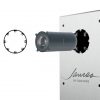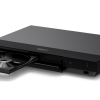Can a brand forget what made it popular with consumers and lose its core audience in the process? That thought has crossed my mind in regard to FiiO over the past few months; the brand was launched with a focus on the budget segment of the market and the success of the FiiO X1, which was designed as an affordable alternative to the Apple iPod, created a lot of fans in the Head-Fi community. It sounded superior and set the table for products like the FiiO M11S DAP.
Similarly, the FiiO E07K and E17K DAC/Headphone Amplifiers were also affordable and something that one could easily use with a computer or smartphone. The portability of the unit was a huge selling point; I took the FiiO E17K with me to work and connected to my docking station and it left with me at the end of the day.
The brand made their mark with high quality products that offered flexibility and excellent sound quality for the money; recent products like the M17 DAP that commands close to $2,000 and $500 IEMs have raised a few eyebrows and some are wondering if the brand has misread the market.
We’ve also watched FiiO’s DAP lineup whittle down from 6 to only 2 models in 2022 and it’s hard to call the M17 or M11 Plus LTD models “budget friendly.”

FiiO used to be the go-to recommendation for kids heading off to college who were looking for a dedicated digital audio music player and not just thinking about using their smartphone. The price of admission has made that recommendation much more difficult.
The reality is that DAPs have been forced to evolve to just survive in a world where smartphones have become the high-end audio/video system for most of the planet who can afford one; a simple file playing device (ahem…CD players) with a simple interface has a rather hard time justifying its existence today.
Consumers expect an HD touch screen, upgradable OS and comprehensive UI, streaming capabilities, support for multiple Bluetooth protocols, and enough battery life to outlast the entire workday including the time spent commuting.
Those expectations have driven the cost of an entry-level digital player well beyond what was considered “budget” in 2015; throw in supply chain issues and inflationary pressures and one can see how the affordable DAP market has been wiped away.
Does the market want or need a product like the FiiO M11S DAP at $500 USD?
Can it succeed and does it offer a more modern twist on what made FiiO such a great brand?

Technology
Having reviewed a number of FiiO M11 variants, which includes the M11 Plus LTD DAP, we were curious to see if FiiO would make any drastic changes to the industrial design; the exterior casework remains rather similar (minus the volume control which was changed in regard to the “Pro” and “Plus” models) — but the internal component have been changed rather dramatically.
The desire to improve the performance, coupled with the need to change DAC chips due to parts shortages, has forced FiiO to utilize 4 different chips in recent years with the M11 series. That’s never an easy process for any manufacturer and those changes get passed along to consumer in the form of higher prices.
The M11S DAP retains the look and feel of the more recent M11 series models and one has to look rather closely to notice that the M11 Plus is slightly wider.
The aluminum case features a glass front and rear panel that looks rather smart for the asking price; the controls can be found on both the left and right sides of the player with all of the ports on the bottom of the case.

The left side of the case features the power button, a large volume rocker, and the shortcut button which serves a number of functions depending on which screen in the UI that you are accessing.
The right side includes the controls for forward, play/pause, and reverse with the SD-card slot beneath them. The bottom panel houses a 3.5mm port, USB Type-C port, 2.5mm port and 4.4mm port (left to right).
The review unit shipped with a clear polymer case that helps protect from scratches and dings while still leaving all of the buttons and ports accessible. The 5-inch 720p (1280 x 720) screen does not utilize a bezel and offers a rather vibrant looking image and we found the touchscreen to be very responsive.

A Better DAC?
Internally, the M11s uses a Snapdragon 660 processor with three gigabytes of RAM and 32GB of internal storage for music files or apps. The signal path is comprised of a pair of ESS 9038Q2M DACs and a pair of OPA1642 op-amps used as low pass filters feeding a pair of OPA 926 amplifier chips.
FiiO’s more expensive DAPs utilize THX AAA-78-2 amplifiers, so we were not surprised to see the less expensive components used in the M11S; the overall performance squeezed out of the DAP is what matters.
The DAC supports up to 32-bit/384kHz PCM, DSD256, and offers 8x MQA unfolding.
Before you bemoan the reduction in power output, the reality is that the tradeoff is a significant increase in the battery performance; the 5300mAh battery lasted almost 14 hours during our testing which was almost 2 hours longer than the 6700mAh battery in the M12 Plus DAP.
The M11S outputs 200mW into 32 ohms (single-ended) and 500mW into 32 ohms (balanced); that power rating and our tests would suggest that the M11S is better suited for easier to drive headphones and IEMs — those looking to drive large planar magnetic headphones should direct their attention to the M11Plus or M17 DAPs.
Connectivity is quite good as well with support for both 2.4GHz and 5GHz Wi-Fi as well as bi-directional Bluetooth. Bluetooth codec support (connect to headphones) includes AAC, aptX, aptXHD, LDAC, LHDC, and SBC — while Bluetooth receive (connect source to M11s) offers SBC, AAC and LDAC support.
In addition, the M11s supports Apple AirPlay, DLNA, FiiO link, and Wi-Fi music transfer.
The operating system is Android 10 with both a full-android environment and Fiio’s dedicated music mode available; updates are available via Wi-Fi or by SD-card load and the Fiio app store offers most of the common streaming services as well as links to APKpure and CoolAPK, so users can load non-native applications as well.
To simplify using the Bowers & Wilkins Px8 and Focal Bathys Wireless Headphones, I added their respective control apps to the M11S to make sure I had access to all of the wireless controls and features.
I added the Bowers & Wilkins app and the Focal app to control the Px8 and Bathys headphones I was pairing with the M11s so I had access to all the wireless controls.
The decrease in RAM raised some initial concerns because I prefer to listen in “pure music” mode, but it had almost no impact on the battery life or performance.

Listening
For my listening tests, I used the dedicated music mode with files delivered from a 1TB micro-SD card and the full Android environment for use with the TIDAL and Qobuz streaming apps. Because of the wired and wireless capabilities of the DAP, we used a mix of wireless and wired headphones and IEMs.
Two weeks on the road with the M11S allowed me to understand and appreciate its capabilities but also some of its minor shortcomings that we’ll get to during my listening notes.
For those with previous experience with FiiO’s DAP lineup, do not make the mistake of thinking that they all sound alike — or that the M11S is similar to the M11 Pro or Plus models. The family resemblance stops at the industrial design.
The M11S offers more top end energy compared to the original model and the overall presentation is certainly pushed forward. Compared to the M11 Plus, the M11S has a smaller sounding soundstage, a reduced sense of drive with more difficult headphone loads, and slightly less impact and texture in the mid bass.
Considering the difference in price, it was very hard to find fault with the M11S overall and most of the time I simply connected the DAP to my Beyerdynamic headphones or the IEMs in my work bag and went about my day.
The low end control and extension of the M11S was generally very good and I never found myself feeling that it was rolling off too soon, or not delivering the impact or speed of the higher-end models that utilize the THX amplifiers; there is a slight loss of definition in the bass, but to claim that the M11 Plus was dramatically superior is not being very accurate.
The midrange performance was very satisfying with both vocals and instrumentation; male vocals had very good weight and texture and we found that they cut through the instrumentation with excellent clarity and detail.
Guitar notes had a nice sharp edge with rather accurate timbre and that carried over to other string instruments that were reproduced with enough energy to sound realistic but without being pushed too far forward in the presentation. Female vocals had excellent resolution and presence but were also not pushed too far forward in the mix or thin sounding.
The treble is where some may find fault with the M11S; the top end performance is rather typical of ESS DACs that offer excellent clarity and detail giving percussion a nice crisp snap and cymbals enough energy to sound quite good (provided the headphone can keep up).
There is an airiness to the sound at the very top, but it may prove to be a tad much for some and there were a number of instances where we felt it was somewhat harsh sounding.
The treble performance makes finding good matches almost mandatory; my FD7 IEMs sounded sublime, whilst the rather expensive Campfire Audio Andromeda came across as overly harsh on a number of tracks.
On the plus side, the M11S did a great job eliminating the background hiss on the Andromeda that plagues the IEMs with some DAPs and other sources.
Those who have listened to the THX powered M11 models will find the M11S a bit more organic sounding through the midrange and treble; you do lose some of the drive that the THX models deliver and the volume will have to be raised to match the output of the other DAPs.
The noise floor is actually superior on the less expensive M11S and that’s a very positive change over the previous models.
The M11s does have three levels of gain and chances are you’ll need them if using a variety of headphones. I found things like the Hifiman Arya needed high gain to do their best work, while models like the Campfire cascade were well suited to mid gain and the UE Live was happiest at low. Having the option to switch at your finger-tips is a big help in power matching headphones to the M11s.
I also tried the new balanced line out option (the M11S keeps the 3.5mm line out as well) with both a 4.4mm to 4.4mm cable and a 4.4mm to XLR cable. I tried pairing the M11S with the Earmen CH-amp via the 4.4mm port and with the SparkOS Aries via the XLR ports and both operated exactly as I had hoped.
Some Caveats
When pairing the M11S to headphones or earphones, the best option is to stick with models that offer a warmer tonal balance; the treble is heavily influenced by the ESS DAC chips that can be somewhat dry or bright sounding. A really open sounding pair of headphones or IEMs can work — but only if the treble isn’t already thin or bright sounding. Synergy is huge with the M11S.
My other issues revolve around the UI that I hope can be fixed through some firmware updates; the information bar is not very informative. It lacks indicators for gain level and for LPF in use; both of which would be nice to have and made listening settings harder to set as there was no visual feedback to show what setting was in use.
That leads to my second gripe; filter settings require that you open the settings app, go to audio, and then adjust the LPF — meaning that it cannot be done in pure music mode since the settings app is not available.
Gain settings can be changed in the settings app as well, but thankfully are available from the drop-down menu at the top of the player for easier access. My final gripe is that the FiiO app still lacks the ability to save user created EQ profiles for later use, and nor does it allow users to tweak the built-in profiles that would allow for quicker adjustment.

Conclusion
With the exception of the UI issues and treble performance that requires careful system matching when it comes to headphones and IEMs, the FiiO M11S is a huge step forward for the brand when it comes to the affordable DAP category — a segment that it had seemingly forgotten.
The M11S offers a lot of performance and streaming platform support in a design that is very easy to carry around while commuting or traveling and it proved to be rather capable with some of my favorite daily headphones and IEMs.
It’s a reliable DAP with superior battery performance to some of the more expensive models in the FiiO range — another feature that we did not expect at $500.
At a time when almost all of the DAP manufacturers are offering $1,000+ models, the FiiO M11S feels like a moment of sanity for the average person who just wants a digital music player that will deliver a great long-term listening experience through a wide variety of headphones.
It would appear that FiiO has remembered that not everyone can afford a Bentley and that’s great news for music listeners who can appreciate the value of a high-end DAP.



































Steven Horne
December 19, 2022 at 11:27 pm
Well rounded review, thanks. I just purchased this model last week. I’m not sure how many people would consider $500 “affordable” for a music player (DAP). I have 3 now, and this one cost more than the other two combined. I am a little disappointed with the audio quality on the M11s. Not that it is bad by any means. I just expected it to out-shine my Hiby R3 Pro, and honestly I can’t tell much difference in the audio quality at all. Plus, at $500 I would think that FiiO could include a current processor (SoC) and the latest version of Android.